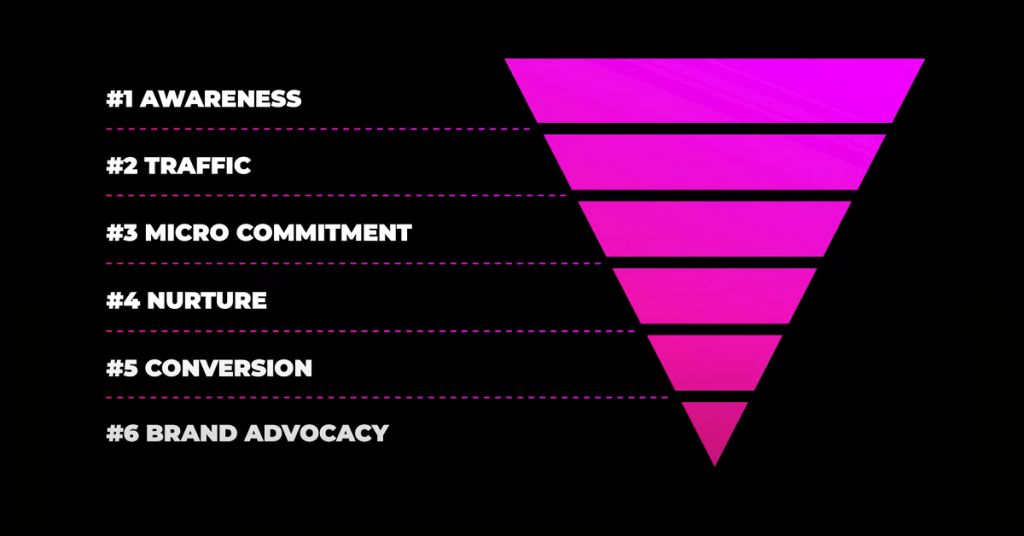Ever wondered how businesses attract customers and turn them into loyal fans? Well, it’s all about marketing funnels – they’re like pathways that guide people from being interested to becoming customers. In this article, we’ll explore the different types of marketing funnels in simple terms. Get ready to unravel the mystery behind how businesses capture attention, build relationships, and make sales through various types of funnels. Let’s dive in and discover the exciting world of marketing funnels together.

Understanding Marketing Funnels
Marketing funnels are crucial for businesses to understand and utilize effectively. They are designed to guide potential customers through the buying process, from awareness to purchase. Marketing funnels consist of several stages, starting with the top-of-the-funnel, where prospects become aware of a product or service.
Then comes the middle-of-the-funnel, where prospects become interested and consider making a purchase. Finally, the bottom-of-the-funnel is where prospects convert into customers and make the actual purchase. Understanding marketing funnels is essential for businesses to optimize their strategies and drive conversions.
By analyzing each stage, businesses can identify potential bottlenecks or areas for improvement. This allows for targeted marketing efforts and a better understanding of customer behavior. Overall, marketing funnels are integral to the success of any business looking to attract and convert potential customers.
Top Of Funnel Strategies
Top of funnel strategies involve various techniques to attract potential customers and build awareness and interest. A crucial aspect includes utilizing social media platforms to reach a wider audience. Implementing engaging content and targeted ads help in capturing the attention of potential customers.
Sharing valuable information and resources further enhances brand visibility. Leveraging influencers and social media influencers can amplify brand exposure and generate interest among users. By utilizing hashtags and trending topics, businesses can tap into relevant conversations and connect with their target audience effectively.
Additionally, creating interactive and shareable content increases the chances of reaching a broader audience. The top of the funnel strategies aim to create a strong initial impression and spark curiosity about the brand or product, ultimately leading potential customers towards conversion.
Middle Of Funnel Strategies
Engaging with potential customers is a crucial strategy in the middle of the funnel. It involves building relationships. Nurturing leads is another important aspect. Providing personalized content can help guide them towards a purchasing decision. Email marketing campaigns are an effective way to reach potential customers.
Craft compelling emails to capture their attention and drive them back to your website. Utilize automated workflows to send targeted messages based on their stage in the funnel. Implementing these strategies will help you convert leads into loyal customers. So, make sure to create engaging content, nurture your leads, and utilize email marketing effectively to maximize your marketing funnel’s success.
Bottom Of Funnel Strategies
Bottom of funnel strategies focus on converting leads into sales by creating urgency and scarcity. By implementing retargeting ads, you can reach out to potential customers who have already shown interest. These ads remind them of your product or service, increasing the likelihood of conversion.
To create urgency, you can offer limited-time promotions or exclusive deals, encouraging customers to act quickly. Scarcity can be established by emphasizing limited stock or limited availability. By utilizing these strategies, you can effectively guide potential customers through the marketing funnel, turning them into paying customers.
It’s important to grab their attention, keep them engaged, and provide a seamless path to purchase. So, take advantage of the bottom of the funnel strategies to maximize your sales potential.
Choosing The Right Funnel For Your Business
Choosing the right marketing funnel for your business requires analyzing your target audience and goals. Start by evaluating different funnel options to determine which one aligns with your objectives. Test and optimize your chosen funnel to ensure it effectively converts leads into customers.
Remember to focus on creating a seamless customer journey that addresses their pain points and offers relevant solutions. By understanding your target audience’s preferences and behaviors, you can tailor your marketing funnel to meet their needs. Regularly monitor and adjust your funnel based on data-driven insights to maximize its effectiveness.
This continuous optimization process will help you achieve better results and drive more revenue for your business. Choose wisely and consistently improve your funnel to attract, engage, and convert your ideal customers.
Frequently Asked Questions On What Are The Different Types Of Marketing Funnels?
What Are The Different Stages Of A Marketing Funnel?
A marketing funnel typically consists of four stages: awareness, interest, consideration, and conversion.
What Is The Purpose Of A Marketing Funnel?
The purpose of a marketing funnel is to guide potential customers through the buying process, from the initial awareness stage to the final conversion stage.
Can You Explain The Awareness Stage Of A Marketing Funnel?
During the awareness stage, potential customers become aware of a brand or product through marketing efforts like advertising, social media, or content marketing.
How Does The Interest Stage Of A Marketing Funnel Work?
In the interest stage, potential customers show a greater interest in the brand or product and actively seek out more information or engage with the brand.
What Happens In The Consideration Stage Of A Marketing Funnel?
During the consideration stage, potential customers evaluate the brand or product and compare it with alternatives, weighing the pros and cons before making a decision.
What Is The Role Of Conversion In A Marketing Funnel?
Conversion is the ultimate goal of a marketing funnel, where potential customers take a desired action such as making a purchase, filling out a form, or signing up for a newsletter.
Conclusion
To sum it up, understanding the different types of marketing funnels is crucial for any business looking to attract and retain customers. Whether you opt for a traditional linear funnel, a more dynamic flywheel approach, or a combination of both, the key is to tailor your strategies to the needs and preferences of your target audience.
By mapping out each stage of the customer journey and creating content that addresses their specific pain points, you can guide them smoothly through the funnel and towards conversion. It’s important to note that while the focus of marketing funnels is on driving sales, they should also prioritize building trust and nurturing long-term relationships with customers.
So don’t hesitate to experiment, refine, and optimize your funnels to ensure continued success in today’s competitive market. With the right approach, your marketing funnels can become powerful tools for driving growth and achieving your business goals.

With my experience in Online marketing now mission is to equip and arm you with the precise online marketing tools, useful resources, marketing strategies, and tactics to help you make IMPACT, SERVE more and EXPLODE your online income so you can live life on your own terms. Visit my Other profiles like Reddit, Instagram and Quora.

